Norsepower Rotor Sails Saves Fuel
Finnish technology company Norsepower, along with project partners Maersk Tankers, Energy Technologies Institute (ETI) and Shell International Trading and Shipping Company Ltd., announced successful trial results of two Norsepower Rotor Sails onboard the Maersk Tankers product tanker, Maersk Pelican.The Rotor Sails are large, cylindrical mechanical sails that spin to create a pressure differential, the Magnus Effect, that propels the vessel forward; in this instance a Maersk Tankers’ Long Range 2 (LR2) product tanker vessel, said the company.The Rotor Sails deliver auxiliary wind propulsion to
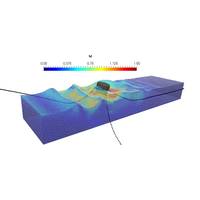
New Tools Optimize the Design of Floating Renewable Energy Devices
down the Levelized Cost of Energy (LCoE).”The research project has been sponsored by CHL and the Engineer Research and Development Centre (ERDC), and HR Wallingford, under a joint collaboration agreement. Additional support was provided by the IDCORE doctorate program from the Energy Technologies Institute and the Research Councils Energy Program.The research paper was presented at EWTEC (European Wave and Tidal Energy Conference) Ireland, in 2017 and is available to download from the University of Exeter research repository
Sonardyne System to Monitor North Sea CO2 Leaks
Sonardyne International is taking part in a new Energy Technologies Institute (ETI) project within the Carbon Capture Storage (CCS) program to develop a Carbon Dioxide (CO2) marine and shallow subsurface monitoring system for underground CCS sites in the North Sea. The system will monitor for any CO2 leakage from saline aquifers and offshore storage sites such as oil and gas fields, both active and depleted. The development of a U.K.-based North Sea CCS industry is an important element in the government’s initiative to significantly cut greenhouse gas emissions by 2050, mitigating against
Fugro Leads UK Carbon Capture Project
Fugro GEOS, in partnership with Sonardyne, is leading a three-year, all-British project for the Energy Technologies Institute (ETI) to develop a carbon dioxide (CO2) monitoring system using marine robotics. Valued at £1 million in the first year, the project aims to provide assurance that CO2 stored deep below the seabed in Carbon Capture and Storage (CCS) sites is secure. The safety of such a method is of paramount importance, with feasibility studies currently underway in the U.K. and overseas on a number of CCS projects. A consortium of British multidiscipline partners will examine the
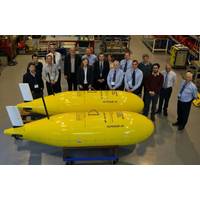
Sonardyne System to Monitor North Sea CO2 Leaks
Sonardyne International Ltd. announced its participation in a new Energy Technologies Institute (ETI) project within the Carbon Capture Storage (CCS) program to develop a Carbon Dioxide (CO2) marine and shallow subsurface monitoring system for underground CCS sites in the North Sea. The system will monitor for any CO2 leakage from saline aquifers and offshore storage sites such as oil and gas fields, both active and depleted. The development of a U.K.-based North Sea CCS industry is an important element in the Government’s initiative to significantly cut greenhouse gas emissions by 2050
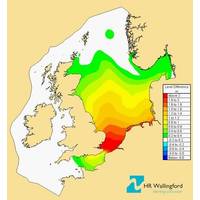
New Technology Predicts Storm Surges
(200m resolution) along the coastline or into estuaries. This means the model can simulate storm surges at a very localized level informing risk assessments for coastal planning or insurance.” Developed by HR Wallingford, SMARTtide was originally commissioned and funded by the Energy Technologies Institute (ETI) to identify the most efficient sites for tidal energy converters, tidal arrays or tidal barrage schemes around the U.K. and French coastlines. The model continues to be used for this purpose and can now also be used for storm surge simulation. hrwallingford.com
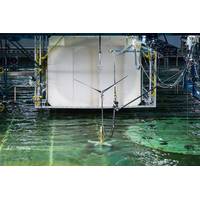
Offshore Wind Floating TLP Model Tests Complete
Glosten Associates (Glosten) announce that the 3-week scale-model testing of the PelaStar tension-leg platform (TLP) has been completed. The three-week test program was conducted in support of the Offshore Wind Floating Platform Demonstration Project FEED Study awarded to Glosten by Energy Technologies Institute (ETI). The test results are being used to further demonstrate PelaStar’s technical feasibility and to calibrate state-of-the-art software used to design, analyze, and optimize the floating wind turbine system. The 1:50-scale floating wind turbine model was tested in the world
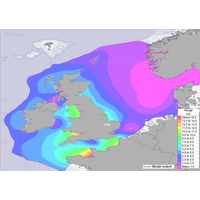
Tidal Energy Modelling Tool Launched
The Energy Technologies Institute (ETI) and HR Wallingford launched a tidal energy modeling tool for use by tidal energy developers to identify the most efficient sites for tidal energy converters, tidal arrays or tidal barrage schemes around the U.K. and French coastlines. The computer program, SMARTtide (Simulated Marine Array Resource Testing), incorporates a 2D hydrodynamic model of the U.K.’s continental shelf and the north-west European coastline. The software will be available to the public from May 21 as a fee-for-service via a portal on HR Wallingford’s website. The data
GL RC Certifies Alstom Tidal Turbine Prototype
Program Tidal) project, which has been installed at the European Marine Energy Center in Orkney, Scotland, to begin 18 months of testing. This follows the successful testing of TGL’s 500kW device, which was also certified by GL RC. The ReDAPT project, commissioned and cofunded by the Energy Technologies Institute, will test the performance of the tidal generator in different operational conditions. Its aim is to increase public and industry confidence in tidal turbine technologies by providing a wide range of environmental impact and performance information, as well as demonstrating a new, reliable

 February 2025
February 2025




